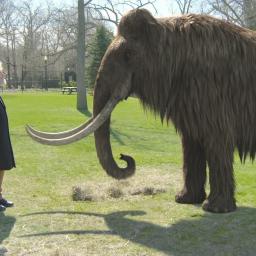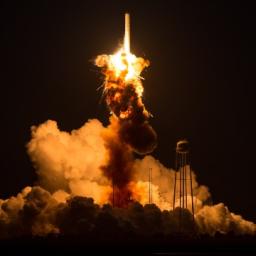ICANN has reported
a major security breach. The organization, which is responsible for managing IP addresses (among other things) for the internet, was hacked late last month. Using basic spear phishing attacks, hackers managed to trick ICANN employees into giving up private credentials upon receiving emails that appeared to come from the organization itself. As a result, several internal systems have been breached.
ICANN reports that not only were internal emails accessed, but also a number of other things including an employee only wiki-page with public data, as well as the database to see who has registered a certain domain. Hackers also accessed the Centralized Zone Data System (CZDS), which allows them access to user names, addresses, emails and other contact/personal data. While certainly the most troubling of them all, the passwords stolen in the CZDS breach were encrypted and not just sitting around as plain text entries.
The organization implemented improved security measures early this year, before the attack. The group now plans to implement additional security measures.
U.S. officials
previously announced plans to relinquish the federal government's control over managing the Internet to a "multistakeholder community" in March, following backlash over revelations about the National Security Agency's surveillance program. The cyber attack could fuel those wary of ICANN's transition to an international authority, who argue the move would compromise the safety of the Internet. Some opponents doubt the organization's ability to manage the Internet for the entire globe.
New research has revealed that ancient Europeans adapted the ability to digest dairy much later than expected. It's long been known that after humans transitioned from hunter gatherers to farmers, many populations also evolved the ability to tolerate lactose, a sugar found in dairy. But new DNA evidence now shows that this ability evolved much later in certain populations - and for 4,000 years ancient Europeans were eating cheese,
despite not being able to stomach it.Scientists had estimated that lactose tolerance must have evolved around 7,000 years ago or more, when cheese-making first started. But the researchers found that the genes didn't actually appear until 3,000 years ago. The next step is to map the distribution of the lactose-tolerant gene further, and find out more about how our genetics changed in response to our diet.
This seems to show that human evolution doesn't happen as quickly as expected, and lends some credence to the saying: Starving people have no food allergies.

New research demonstrates that an increase in greenhouse gas concentrations thousands of years ago was a key factor in causing substantially more rainfall in two major regions of Africa. It was the most recent time during which natural global warming was associated with increases in greenhouse gas concentrations. Following a long dry spell during the glacial maximum, the amount of rainfall in Africa abruptly increased, starting around 14,700 years ago and continuing until around 5,000 years ago. So intense was the cumulative rainfall, turning desert into grasslands and savannas, that scientists named the span
the African Humid Period (AHP).Previous studies had suggested that the AHP was triggered by a ~20,000-year cyclic wobble in Earth's orbit that resulted in increased summertime heating north of the equator. That summertime heating would have warmed the land in such a way as to strengthen the monsoon winds from the ocean and enhance rainfall. Instead, the study revealed the role of two other factors: a change in Atlantic Ocean circulation that rapidly boosted rainfall in the region, and a rise in greenhouse gas concentrations that helped enhance rainfall across a wide swath of Africa.
While the industrialized world looks to reduce greenhouse gas emissions to preserve our current climate, Africa could find itself benefiting from increased emissions.
About three billion miles from Earth, a spacecraft the size of a grand piano
is about to wake up. The spacecraft is called New Horizons, and it has been traveling for nine years across the solar system on a high speed journey to its ultimate destination, the dwarf planet Pluto. A few weeks later, instruments on the spacecraft will begin to make observations. No one really even knows what Pluto looks like. Neither of the Voyagers visited Pluto on their journey through the solar system. One sad, pixelated picture taken by the Hubble telescope in 1994 is the best image of Pluto and its moon Charon ever made.
New Horizons is scheduled to make long-range observations of a small Kuiper belt object, temporarily designated VNH0004, in January 2015, before the Pluto flyby. After passing by Pluto, New Horizons will continue farther into the Kuiper belt. Provided it survives that far out, New Horizons is likely to follow the Voyager probes in exploring the outer heliosphere and mapping the heliosheath and heliopause. The heliopause might be reached around year 2047. Even though it was launched far faster than any outward probe before it, New Horizons will never overtake either Voyager 1 or Voyager 2 as the most distant human-made object from Earth. Close fly-bys of Saturn and Titan gave Voyager 1 an advantage with its extra gravity assist.
New invention outperforms nature with
new gecko-inspired devices that have been used to climb glass walls. "To be able to climb glass felt a little bit magical - it feels like you're hooking this device onto a perfectly flat smooth surface, and it doesn't feel possible," Hawkes said.
Geckos can scale vertical walls and even hang upside down because their plump toes are covered in hundreds of microscopic bristles called setae, which generate a kind of electric force known as van der Waals force, strong enough to keep geckos stuck onto surfaces. The devices are about the size of a human hand but are nevertheless strong enough to support the weight of a person. In contrast, real gecko feet would require a sticky surface at least 186 square inches (1,200 square centimeters) large, nearly twice the size of a modern tennis racket.
In addition to futuristic gear used by soldiers and spies to climb walls, the researchers suggest their new invention could lead to boots that help astronauts conducting spacewalks and to mechanical grippers that snag debris in orbit.
As news of the Virgin Galactic crash, Antares explosion and Rosetta exploration filled science pages, another space drama has quietly unfurled. In May, Russia launched a rocket to add several satellites to its existing constellation. In the process, it deployed what was first believed to be a piece of space debris but has now become
a matter of great speculation.
Russia did not declare its orbit, and now the U.S. military, space experts and amateur sleuths have been closely tracking its movements, each of which has been deliberate and precise. The unidentified satellite - called Object 2014-28E - recently navigated toward other Russian space objects, its voyage culminating in its recent hookup with the remains of the rocket stage that originally launched it.
There are whispers it could be the return of the
'satellite killer'. The Soviet anti-satellite weaponry program called "Istrebitel Sputnikov" in the 1960s was believed to be permanently retired by the Soviet Union's collapse.

Get ready for Pleistocene Park
South Korea's Sooam Biotech Research Foundation (which has been cloning dogs for years) is partnering with Russian researchers
to clone a woolly mammoth, if only they can find suitable cells.
Russian and South Korean scientists who recovered a well-preserved frozen woolly mammoth from Siberia's permafrost last year raised hopes that researchers could find an intact cell nucleus that contained the full set of DNA instructions for making a mammoth. If that could be done, the nucleus could be inserted into an elephant egg, sparked into cell division, and then implanted into a surrogate mother elephant. The result? A clone that should be virtually identical to the long-dead mammoth.
Carbon dating of the mammoth's flesh determined that she lived about 40,000 years ago. (Earlier estimates suggested the remains were just 10,000 years old.) Growth rings in the tusk suggested she was in her late 50s when she died.
Those cell towers that provide the high-speed connections to your phone, themselves have to rely on land lines for "backhaul", to connect them to the core of the wireless provider's network. Enter cable companies, who often times provide that backhaul to smaller communications towers - Time Warner Cable
serves more than 10,000 cell towers. In the case of small cells, cable companies are in some cases able to leverage their fiber-to-the-home (FTTH) investments as high-speed backhaul for small cells instead of requiring the much more costly option of running new dedicated lines to the site. Cable companies are largely only involved in providing the backhaul, but about 15% of cable providers are also considering entering the business of offering small-cells-as-a-service, themselves. If you count Wi-Fi as a small cell, the cable industry is already quite familiar with and deeply invested in the business.
Metro cells, which are supposed to cover up to two kilometers in area and up to around 2,000 users, are the most likely candidates for FTTH backhaul. Smaller cells closer to subscribers offer the possibility of higher speeds using less power and better utilization of scarce radio spectrum. In essence, "small cells end up being a subscriber on the network," Vaughn said. He went on to describe several deployments: an AT&T trial in St. Louis, Mo., where small cells were deployed on utility poles fairly low to the ground, at about head-height; and a Vodafone deployment in Spain where fiber had already been deployed along the street and the equipment had a very small footprint.

Virgin Galactic's SpaceShipTwo was
destroyed during a powered test flight today in Mojave, CA. This was the fourth powered test flight of SpaceShipTwo. There were two pilots on board the craft. Local law enforcement agencies have confirmed that one of the pilots was killed during the accident and the other was able to parachute from the craft, but was injured and had to be flown to a nearby hospital.
This test flight
was the first for a new kind of fuel-a plastic similar to nylon. Previously, SpaceShipTwo had used a synthetic rubber fuel, one that had been giving engineers trouble for years as they tried to scale up the successful 3-seat SpaceShipOne prototype, which won the X Prize in 2004, to a much bigger vehicle using the same hybrid rocket design and fuel, and meant to carry tourists to suborbital space.
We're left to wonder what impact the accident will have on the nascent commercial spaceflight industry, which Branson has been working hard to characterize as safe. Friday's crash is a stark reminder that spaceflight is an inherently risky endeavor.

An unmanned NASA-contracted rocket exploded early Tuesday evening along the eastern Virginia coast,
causing a huge fireball. Video shows the rocket rising into the air for a few seconds before an explosion. It then plummets back to Earth, causing more flames as it hits the ground. NASA tweeted that the failure occurred six seconds after launch. Afterward, the launch director said on NASA's feed that all personnel were accounted for and that no injuries were reported.
According to NASA, the Orbital Sciences Corp.'s Antares rocket and Cygnus cargo spacecraft were set to launch at 6:22 p.m. ET from the Wallops Flight Facility along the Atlantic Ocean. It was set to carry some 5,000 pounds of supplies and experiments to the International Space Station. Since the end of NASA's space shuttle program, it has relied on private companies -- specifically Orbital Sciences and SpaceX -- to bring materials to the space station, albeit using NASA facilities for launch. Tuesday's launch was supposed to be the fourth flight for Orbital until it ended, as the company acknowledged in a statement, in "catastrophic failure." Marking
the first accident since NASA turned to private operators to deliver cargo to the International Space Station.



